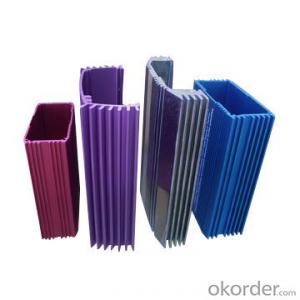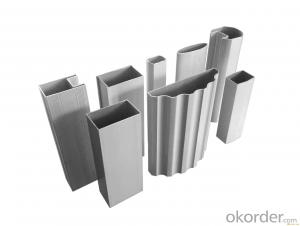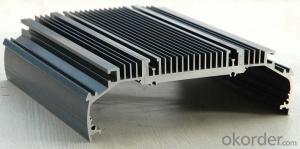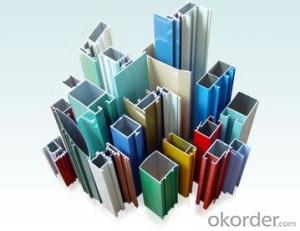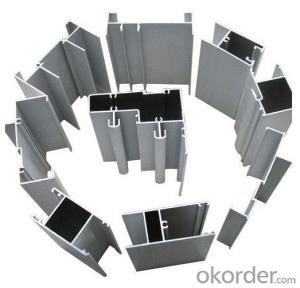Standard Aluminum Profiles - Profile Aluminium Profile Price Aluminium Extrusion Profile Factory
- Loading Port:
- China Main Port
- Payment Terms:
- TT OR LC
- Min Order Qty:
- -
- Supply Capability:
- -
OKorder Service Pledge
Quality Product, Order Online Tracking, Timely Delivery
OKorder Financial Service
Credit Rating, Credit Services, Credit Purchasing
You Might Also Like
Material | Alloy 6063,6061,6005or according to customer’s choice |
Temper | T3, T4, T5, T6 |
Surface | Anodize, electrophoresis, powder coating, PVDF coating, wood grain painting, matted, etc. |
Color | Any colour based on Standard Germany RAL Mark |
Length | Coating 6.5 meters, Anodizing 6.5 meters, Mill finish 5 meters |
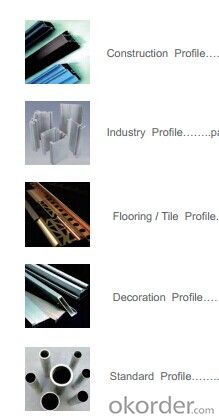

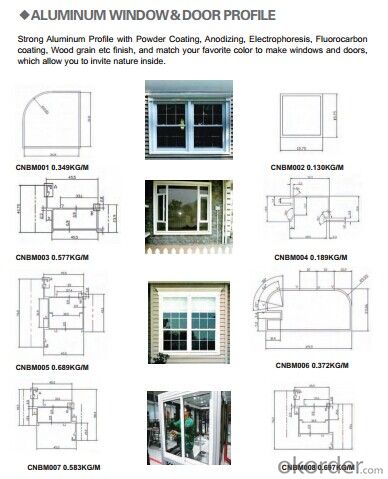
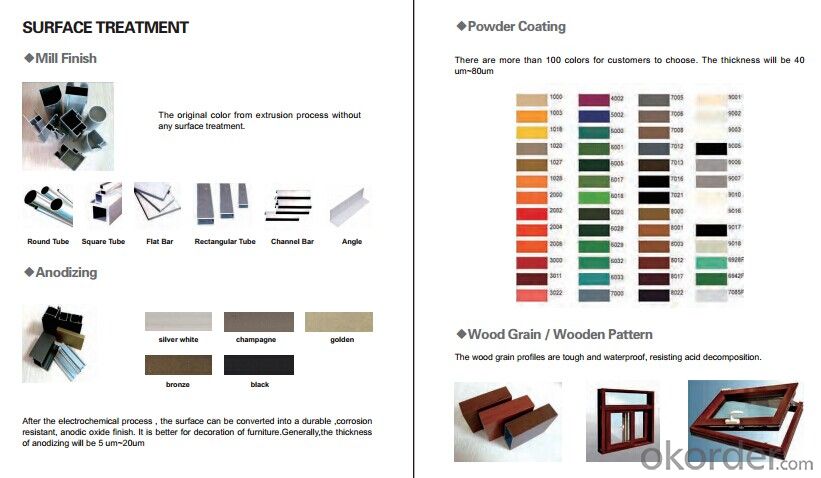
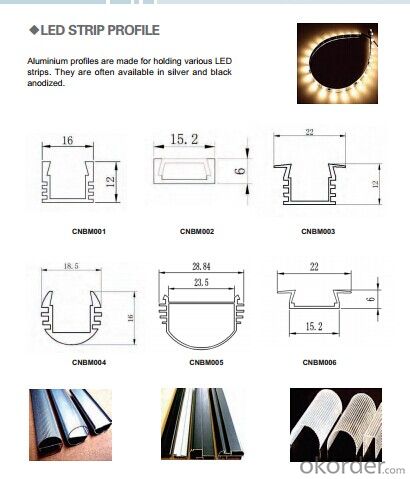
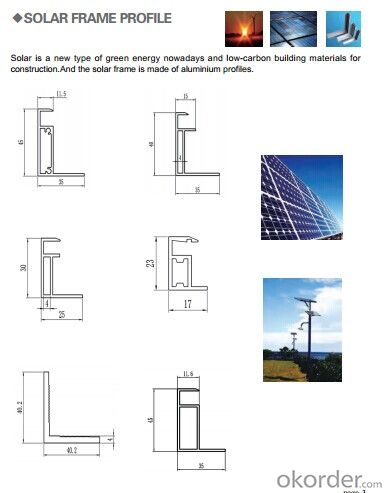
- Q: Request recommended professional aluminum manufacturer?
- Jing Long aluminum, aluminum strip and aluminum wafer production capacity of 60000 tons, this piece in Shangqiu, still have the strength, is a professional production and processing, wholesale distribution of aluminum, hot-rolled plate, hot rolled plate, aluminum plate, aluminum plate, roll spindle is the main.
- Q: What are the durability characteristics of aluminum profiles?
- Aluminum profiles are known for their excellent durability characteristics. They have a high strength-to-weight ratio, allowing them to withstand heavy loads without deforming or breaking. Additionally, aluminum is highly resistant to corrosion, making it suitable for both indoor and outdoor applications. The material is also non-combustible, providing added safety in case of fire. Overall, aluminum profiles offer long-lasting performance and are an ideal choice for various structural and architectural purposes.
- Q: What are the different surface polishing options for aluminum profiles?
- Aluminum profiles offer various surface polishing options, each with its own shine and finish levels. These methods include mechanical polishing, chemical polishing, electrolytic polishing, and anodizing. Mechanical polishing involves using abrasives and polishing compounds to physically eliminate surface imperfections and achieve a smooth, reflective finish. This can be done manually or with automated machines. While it provides a high shine, it requires careful attention to detail and multiple steps. Chemical polishing, on the other hand, employs chemical solutions to dissolve a thin layer of aluminum, resulting in a smoother surface. It is often used for large-scale production due to its quick and uniform application, but it may not offer the same level of shine as mechanical polishing. Electrolytic polishing utilizes an electric current to eliminate surface imperfections and create a polished finish. By using the aluminum profile as an anode and a conductive material as the cathode, electrolytic polishing produces a mirror-like finish with excellent precision and uniformity. Although not a polishing method itself, anodizing is a commonly used surface treatment for aluminum profiles. It involves creating a protective oxide layer on the metal's surface through an electrochemical process. Anodizing enhances the appearance of profiles by providing a smooth, colored, or clear finish, while also improving their durability and resistance to corrosion. The choice of surface polishing option depends on factors such as the desired shine level, the complexity of the profile's design, and the intended application. It is essential to consider cost, time, and quality requirements when selecting the most suitable option, as each method has its advantages and limitations.
- Q: This question asks if it is possible to recycle aluminum profiles in a simple and effective manner.
- <p>Yes, aluminum profiles can be recycled easily and efficiently. Aluminum is one of the most recycled materials in the world due to its non-toxic nature and the energy efficiency of the recycling process. Recycling aluminum requires only 5% of the energy needed to produce new aluminum from raw materials. Additionally, aluminum can be recycled indefinitely without losing its properties, making it a highly sustainable material. The recycling process involves melting the aluminum, which is a relatively simple and cost-effective procedure compared to many other materials. This makes aluminum an ideal material for sustainable manufacturing and waste reduction strategies.</p>
- Q: Are there any limitations or drawbacks to using aluminum profiles?
- Yes, there are limitations and drawbacks to using aluminum profiles. One limitation is that aluminum profiles have lower strength compared to other materials such as steel. This means that they may not be suitable for applications that require high load-bearing capacity or structural integrity. Another drawback is that aluminum profiles can be more expensive than other materials. The cost of aluminum and the manufacturing processes involved in creating aluminum profiles can make them a more expensive option for certain projects. Aluminum profiles are also susceptible to corrosion, especially in harsh environments. Without proper protective coatings or maintenance, aluminum profiles can deteriorate over time, affecting their performance and lifespan. Furthermore, aluminum profiles have limited flexibility and may not be as easy to modify or customize compared to other materials. This can be a drawback in projects that require frequent alterations or adjustments. Lastly, aluminum profiles have lower thermal conductivity compared to materials like copper. This can limit their use in applications where efficient heat transfer is required, such as in some electrical or thermal management systems. Overall, while aluminum profiles offer many advantages such as lightweight, corrosion resistance, and recyclability, it is important to consider these limitations and drawbacks before choosing them for a specific application.
- Q: Can aluminum profiles be used for solar panel mounting systems?
- Yes, aluminum profiles can be used for solar panel mounting systems. Aluminum is a commonly used material for this purpose due to its lightweight, durable, and corrosion-resistant properties. It provides a strong and stable support structure for solar panels while being easy to install and maintain.
- Q: Are aluminum profiles suitable for playground equipment?
- Yes, aluminum profiles are suitable for playground equipment. Aluminum is a lightweight, durable, and corrosion-resistant material, making it ideal for use in playground equipment. It provides stability and strength while also being easy to work with and maintain. Additionally, aluminum profiles can be shaped into various forms, allowing for creative and innovative playground designs.
- Q: Where is the exact location? TwentyBecause I was doing aluminum sales, want to go to the market!Where is the specific market aluminum sales, as long as there is, I have to go around! Say where it is! For example, what area, what road, how many?! Since I went to Chengdu for the first time, please tell me more about it. Thank you!
- 512 building materials market 'The two ring road north station over there direction
- Q: This question asks for a list of various types of adhesives that are typically used in conjunction with aluminum profiles in construction projects.
- <p>Common types of adhesives used with aluminum profiles in construction include epoxy resins, which offer strong bonding and resistance to chemicals and temperature changes; polyurethane adhesives, known for their flexibility and durability; silicone adhesives, which are excellent for sealing and bonding in a wide range of temperatures; acrylic adhesives, valued for their versatility and quick setting times; and cyanoacrylate or 'super glue', which bonds quickly and is great for small, precise applications. Each type has unique properties that make it suitable for different construction needs.</p>
- Q: Can aluminum profiles be an alternative to wood in construction?
- Yes, aluminum profiles can certainly be a viable alternative to wood in construction. Aluminum is lightweight, durable, and resistant to rust and corrosion, making it an excellent choice for various construction applications. Additionally, aluminum profiles offer flexibility in design, are easy to install, and require minimal maintenance. They can be used for structural components, windows, doors, cladding, and other construction elements, providing a sustainable and cost-effective solution compared to wood.
Send your message to us
Standard Aluminum Profiles - Profile Aluminium Profile Price Aluminium Extrusion Profile Factory
- Loading Port:
- China Main Port
- Payment Terms:
- TT OR LC
- Min Order Qty:
- -
- Supply Capability:
- -
OKorder Service Pledge
Quality Product, Order Online Tracking, Timely Delivery
OKorder Financial Service
Credit Rating, Credit Services, Credit Purchasing
Similar products
Hot products
Hot Searches
Related keywords
